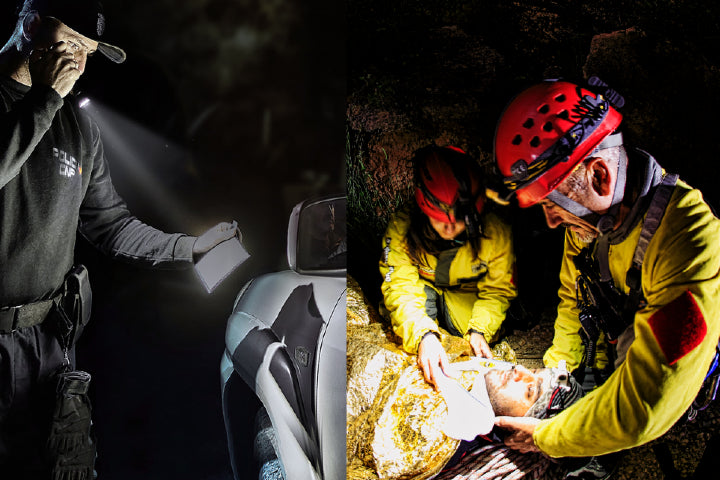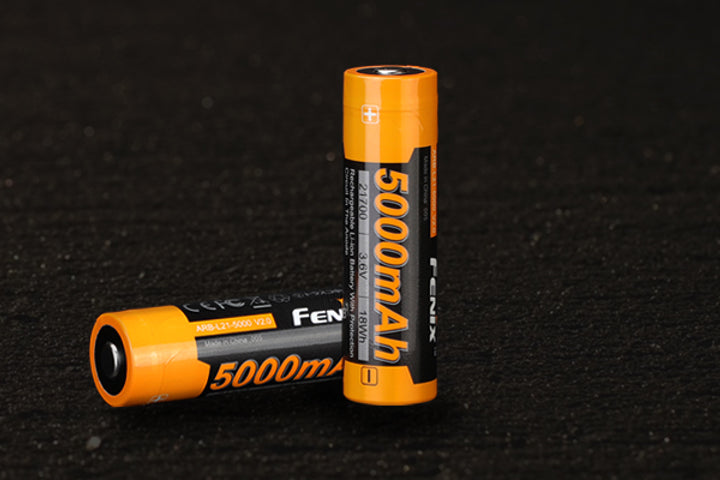The Beginner’s Guide to Night Hunting
Key Takeaways
Night hunting offers a thrilling experience with unique challenges, requiring specialized gear and preparation.
- Essential equipment includes high-lumen flashlights, thermal or night vision scopes, scent-blocking camouflage, and a reliable hunting knife.
- Safety is crucial when hunting at night—always know your surroundings, use appropriate lighting, and handle firearms responsibly.
- Stealth and strategy are key to success, including moving quietly, using calls strategically, and monitoring wind direction.
- The best times for night hunting are typically around dawn and dusk, but species like hogs and coyotes are often active throughout the night.
- Fenix flashlights provide durable, high-performance lighting solutions ideal for night hunting, offering bright, long-lasting illumination.
Night hunting presents a unique challenge, combining skill, strategy, and the right gear. For beginners, it’s an exhilarating experience, offering a blend of stealth and precision under the cover of darkness. In this guide, we’ll cover everything you need to know about night hunting, from selecting the proper equipment to ensuring safety in low-light environments. Whether you're new to hunting or just looking to expand your skills, mastering the art of hunting at night can open up a new world of adventure.
Understanding the Appeal of Night Hunting
Night hunting isn’t just a test of skill; it’s also a practical way to pursue certain species that are more active after sunset. Animals like coyotes, hogs, and raccoons tend to be nocturnal, offering more hunting opportunities when the sun goes down. The quiet and stillness of the night also give hunters an added advantage, as prey animals are often less cautious. Deer in particular are active during twilight and pre-dawn hours meaning that you'll need to get out before sunrise or stay out past sundown.
However, night hunting comes with its own set of challenges. Reduced visibility, unfamiliar sounds, and limited lighting make it crucial to have the right gear and preparation to ensure a successful outing.

Essential Gear for Night Hunting
One of the most important factors in night hunting success is having the right equipment. Here’s what you’ll need:
1. Flashlights and Headlamps
Having a reliable flashlight is essential for hunting at night. A high-lumen flashlight with long-range capabilities helps you spot prey from a distance, while maintaining a stealthy approach. For instance, Fenix flashlights are highly recommended for their durability and brightness, perfect for spotting animals in low light. Models like the Fenix TK16 V2 are popular among hunters due to their powerful output and rugged design.
Equally important is a headlamp, which allows for hands-free operation. This becomes critical when you need to navigate tricky terrain, reload, or handle gear without losing your vision.
2. Thermal and Night Vision Scopes
Traditional scopes aren’t much use in the dark, so you’ll need either thermal or night vision scopes to locate your target. Night vision scopes amplify available light, helping you see animals more clearly in near-total darkness, while thermal scopes detect heat signatures, giving you an edge when your prey blends into the surroundings.
3. Camouflage and Scent Control
At night, animals rely heavily on their sense of smell and hearing to detect predators. Wearing scent-blocking camouflage is key to staying undetected. Opt for dark-colored camo patterns that match the nighttime environment, ensuring you remain hidden from both sight and smell.
4. Hunting Knives and Gear
When hunting at night, it’s important to have a well-rounded kit that includes essentials like hunting knives, first-aid supplies, and GPS devices. These tools can ensure that you not only have a successful hunt but also stay safe and prepared for any situation that may arise in the dark.
Safety Tips for Hunting at Night
Hunting in the dark comes with inherent risks, and safety should always be your top priority. Here are some critical tips to keep in mind:
1. Know Your Surroundings
It’s easy to get disoriented when hunting at night, especially in unfamiliar terrain. Make sure to scout the area during daylight hours to familiarize yourself with the landscape. Mark important points like your vehicle or hunting stand, and bring along a GPS device or a fully charged phone to help navigate.
2. Use Red or Green Lights
When moving through the woods, using white light can spook animals, making them flee before you have a chance to take aim. Instead, opt for red or green lighting, which is less likely to alert wildlife but still provides enough illumination for you to see where you're going.
The Fenix HT18R is a great candidate for this reason since it includes a green and a red color filter!

3. Communicate With Your Group
If you’re hunting in a group, clear communication is critical. Make sure everyone knows the game plan and is aware of each other’s positions. Using two-way radios can help you stay in touch without making loud noises that could scare away your prey.
4. Handle Firearms Responsibly
Proper gun handling is even more important at night. Make sure your firearm is always pointed in a safe direction, and never shoot at movement or sounds. Always positively identify your target before pulling the trigger, and ensure that other hunters in your party do the same.
Key Strategies for Success When Hunting at Night
Night hunting requires a different approach than daytime hunting. With reduced visibility and the heightened senses of your prey, you’ll need to adapt your strategies to ensure success.
1. Move Slowly and Stealthily
Animals are very alert at night, so it’s important to move quietly and deliberately. Take small, measured steps, and pause frequently to listen to your surroundings. Rustling leaves or breaking branches can easily scare off your target.
2. Use Calls Sparingly
Game calls can be incredibly effective at night, but they should be used strategically. Overuse of calls can alert animals to your presence and make them wary. Start with soft, subtle calls and increase the volume gradually. Remember to stop calling once you hear or see movement.
3. Pay Attention to Wind Direction
Just as with daytime hunting, wind direction plays a crucial role when hunting at night. Always position yourself downwind of your target to prevent them from catching your scent. This can give you the edge you need to get within range undetected.
4. Set Up Near Feeding Areas
Many nocturnal animals are drawn to food sources at night. Setting up near known feeding areas, such as cornfields or water sources, increases your chances of spotting prey. Use game cameras to track activity in these areas and determine the best time to hunt.
Best Times for Night Hunting
Timing is everything when it comes to night hunting. Generally, the best times to hunt are during the twilight hours just after sunset or just before sunrise, as animals tend to be more active during these periods. However, certain animals, like hogs and raccoons, may be active well into the night, so it’s essential to adjust your hunting schedule based on the species you're targeting.
Pay attention to moon phases as well. A bright, full moon can provide enough natural light for hunting without the need for additional lighting, while a new moon may require you to rely more on artificial light sources.
Why Fenix Flashlights Are Perfect for Night Hunting
When it comes to night hunting, having a reliable source of light can make or break your hunt. Fenix flashlights are designed with hunters in mind, offering high-lumen outputs and durable builds that can withstand the rigors of the outdoors. With options like the Fenix PD36R Pro or the Fenix HT30R, you can illuminate your surroundings and spot prey from a distance with ease.
These flashlights are also compact, lightweight, and equipped with long-lasting batteries, ensuring that you won’t be left in the dark halfway through your hunt. For a hands-free option, consider pairing your flashlight with a Fenix headlamp, like the Fenix HM70R, which offers both power and versatility.

Good luck this hunting season
Night hunting is an exciting and challenging experience that requires the right mix of gear, knowledge, and skill. By following these tips and strategies, beginners can feel confident as they embark on their first night hunting adventures. With the right equipment, including Fenix flashlights, you’ll be prepared to tackle the darkness and make your night hunts as successful as they are thrilling.
Frequently Asked Questions
What is the best time for night hunting?
The best times are during the twilight hours, just after sunset or before sunrise, but it varies based on the animal you're hunting.
Is night hunting legal everywhere?
Night hunting laws vary by state or country, so it's important to check local regulations before heading out.
Why is a flashlight essential for night hunting?
A flashlight helps you see in low-light conditions, track animals, and ensure your safety by illuminating your path.
Can animals see flashlight beams at night?
Most animals are not spooked by red or green light, so using flashlights with these options can help keep you hidden.
What animals are commonly hunted at night?
Animals like coyotes, hogs, and raccoons are often hunted at night, as they are more active during these hours.
How do I avoid scaring animals at night?
Move quietly, avoid making too much noise, and use scent control to remain undetected by your prey.















